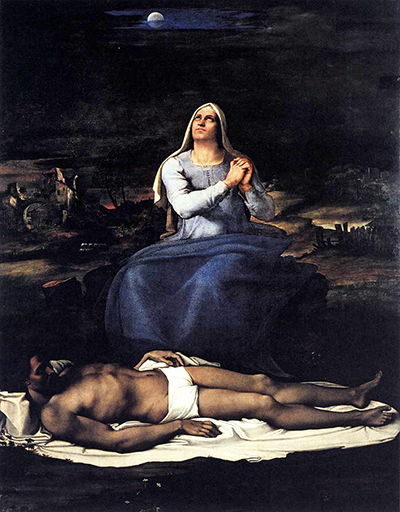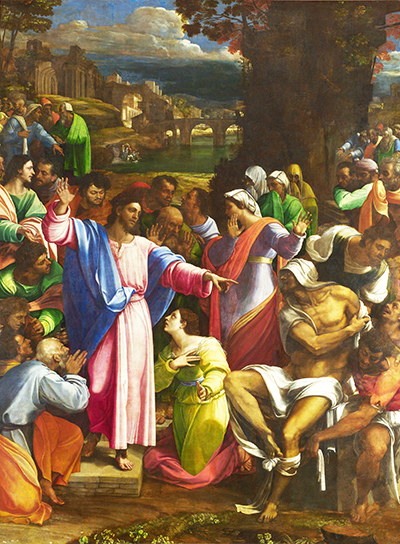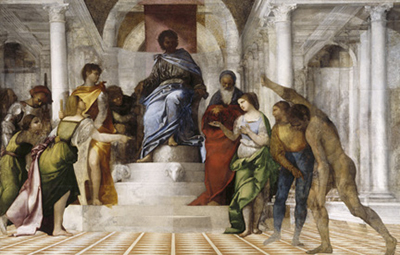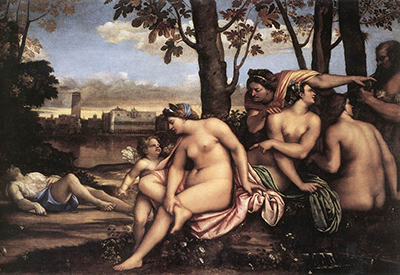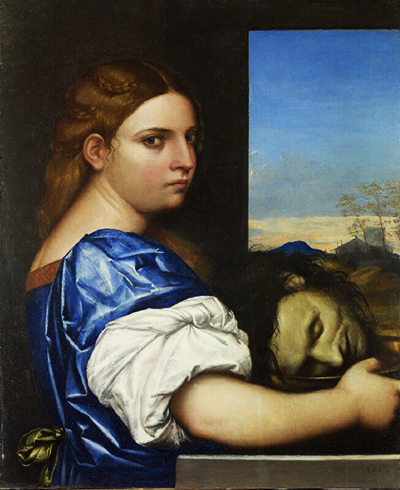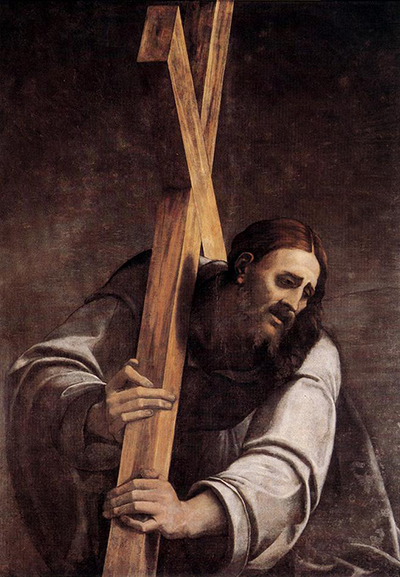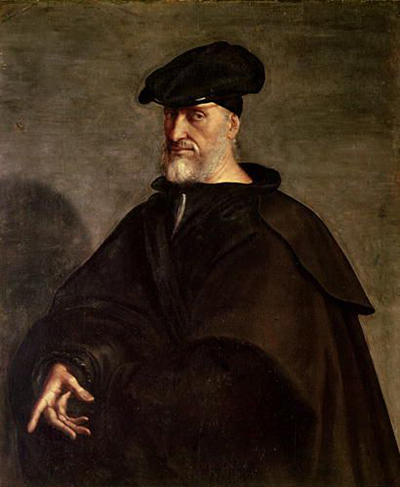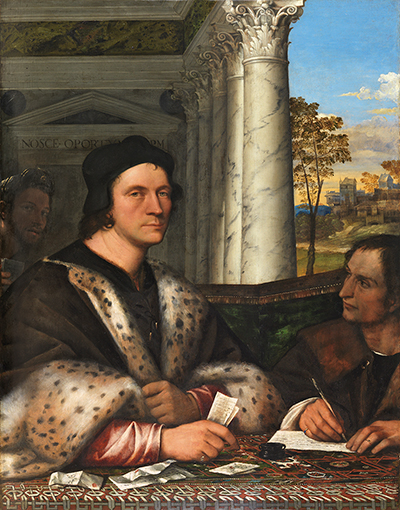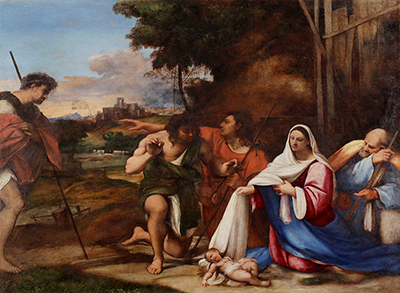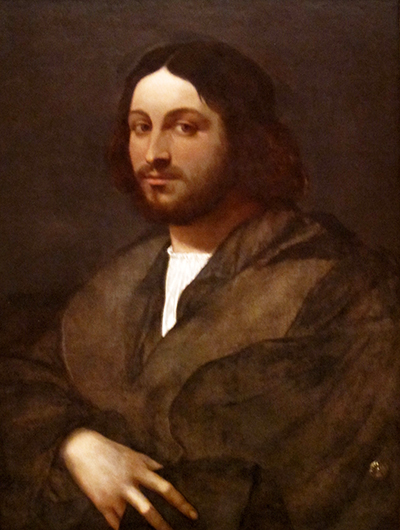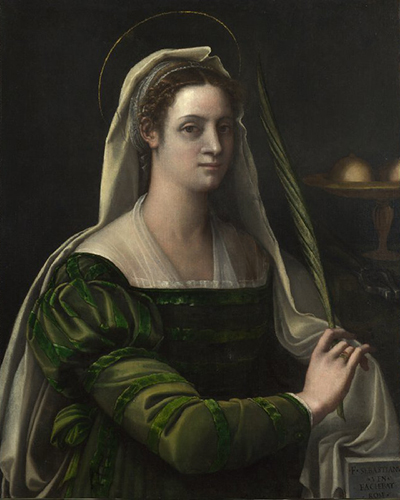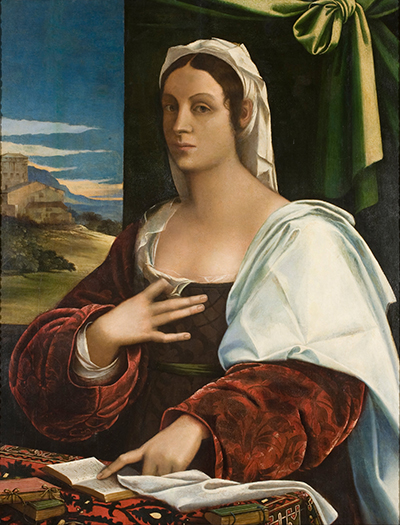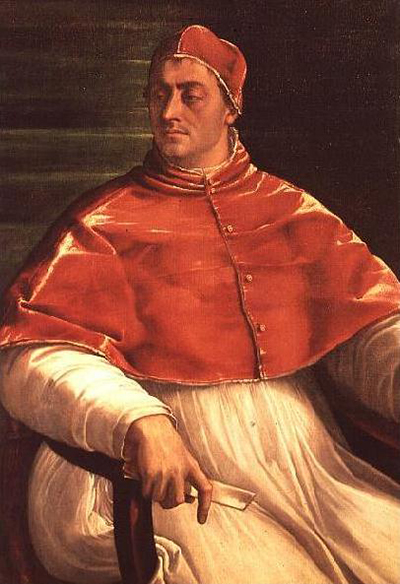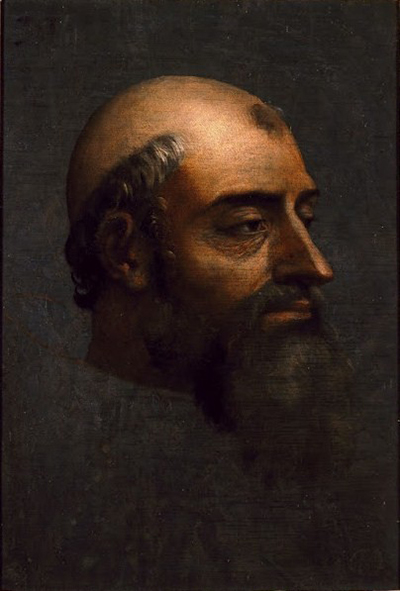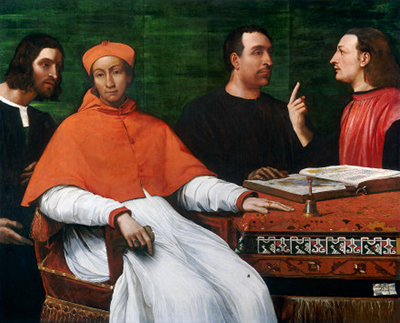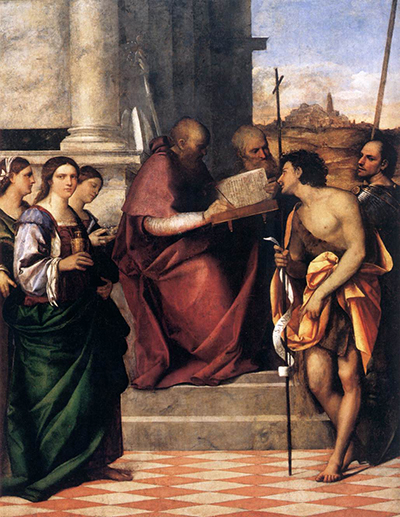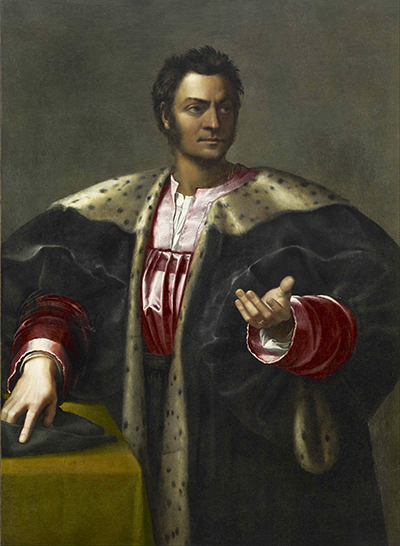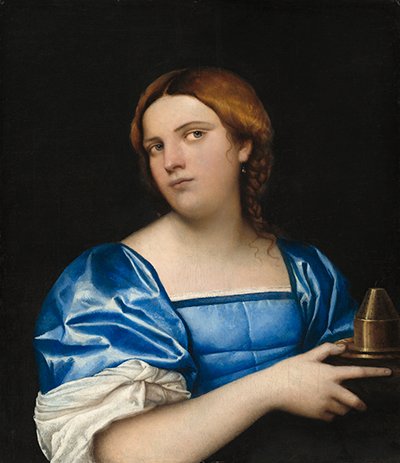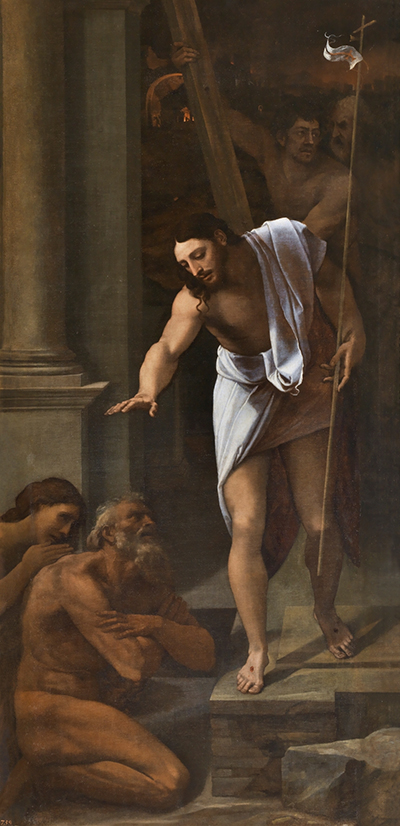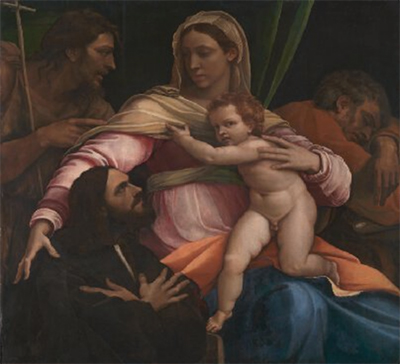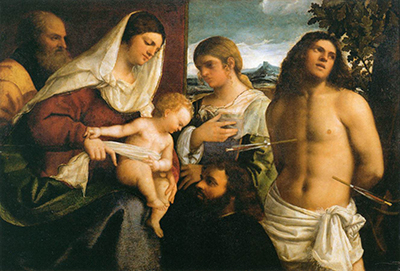Sebastiano del Piombo's artistic style would adapt over time, influenced by the different cities in which he lived.
Venetian-born Sebastiano would intially make use of this region's famed use of colour, with a vivid brightness spread across many of his early paintings reminiscent of Titian. His later move to Rome would bring about a more sombre use of colour and a push towards the classical style of this region. That said, there was an extended period in his career where he produced paintings which were clearly a careful blend of both influences.
The relationship between Sebastiano and Michelangelo was famously strong though in most cases the younger Sebastiano would simply take study drawings for guidance from his experienced colleague, rather than them both working directly on the same painting. He respected Michelangelo's figurative skills but wanted to retain his artistic independence at the same time.
As a young artist Sebastiano was known for using an extraordinarily wide range of tones as well as putting together highly challenging compositions. In some cases even his undoubted skills were incapable of effectively blending these multitudes of items together into a single entity, but most of the time he would rise to the task admirably.
This was an artist open to change and new ideas, eventually leaving behind the tried and tested Renaissance formula of frescoes in order to continue his preferred method of oil painting. Whilst many of his masters would continue with what they had done all their lives, he was happy to try a new direction for much of his later work. In fact, Sebastiano paintings would be put on all of plaster, stone, alabaster and slate at some point in his career. Some of those surfaces had not really been used by many artists before.
Some have assumed that because of the number of drawings that he took from Michelangelo for various projects that he must have been weaker as a draughtsman than as a painter. This is not really true and he was respected in this art medium, too. Enough have survived to the present day for us to conclude that he followed fairly standard practices for someone from Venice, with black chalk combined with white highlights for his portrait figures. Indeed, some elements of his drawing style were unique within the Venetian school and identifying his work became unusually easy for this medium.
Late in his career Sebastiano would reduce his artistic output after taking a role as a courtier. At this stage of his life he was content to settle for a steady wage with the stability that was offered. He continued to produce paintings, but much less frequently. This development in his life, combined with the damage and loss that sadly occured to many of his paintings, has meant that his remaining oeuvre is relatively small.



